The debate on healthy eating has been raging all year, but where has it left snacks?
There was a time, probably as little as a year ago, when you could sit down and tuck into a packet of crisps, a tube of Pringles or a bowl of nuts without feeling a pang of guilt come across you.
However, in the last year, health has become the buzzword for seemingly every new product introduced in the c-store sector, and snacks have not been exempt from feeling the change in society’s eating habits.
According to the latest research from Mintel, the demand for crisps and savoury snacks is entering a gradual but noticeable decline due to healthier eating trends, market saturation and competition from alternative products.
However, that doesn’t explain why bigger companies such as Walkers, which launched its Nobby’s Crisps this year, and United Biscuits UK (UBUK), which has just announced two new additions to its McCoy’s Specials range - Spanish chorizo sausage and Thai sweet chicken - are still investing in new lines that aren’t aimed at the health crowd but at consumers’ taste buds.
This suggests that while healthy eating may be on everyone’s minds it has as yet not invaded their buying habits completely.
UBUK impulse trading director Paul Graham says: “Less than six months from launch, McCoy’s Specials is worth £7.2m, according to AC Nielsen, while sales of the McCoy’s brand as a whole are up 34%, which goes to show that the healthy option we are all hearing about is not affecting consumer demand for premium savoury snacks. From our own research we have found that consumers tend to start off the week wanting to be healthy but by the weekend they indulge themselves in snack-sharing occasions. This means that both
the healthy snacking sector and the top end of the premium savoury snack sector are in fact growing together.”
LIGHTER LUNCHES
While many manufacturers are sticking to what they know when it comes to crisps, and continue to produce ranges that are male-orientated, others are focusing on the fairer sex, who take more than a passing interest in all healthy foods.
Golden Wonder launched its Golden Lights range of low fat crisps last year and this year has added its first ever sharing bag to the range - the Mediterranean tomato and basil flavour, while Empire Food Brokers has introduced Terra 50% Reduced Fat Chips to target an audience it feels has been ignored by other snack manufacturers during the health debate - the ABC1 female.
Empire Food Brokers chief executive Chandresh Patel says: “For too long consumers have had to give up flavour for health, but with modern production processes, premium quality healthy lines can be sourced. We believe Terra Chips can fill a hole in the crisps market and appeal to the female snacking audience, which is looking for a healthy alternative.”
As the crisp industry decides where it wants to go and what its target audience should be, the nuts market seems to have been unaffected by the health craze and has grown by £11m in the last year.
Pepsico believes its launch of Nobby’s Nuts has played a major part in what it sees as a renaissance in the nuts category.
Pepsico trade marketing manager Cara Beeby comments: “Since launch, growth in the nut market has accelerated from 15% to 25%, while sales of nuts in the impulse channel have gone from a decline of minus 7%, to growth of 5%. As well as Nobby’s no-nonsense brand personality, we have a product that is appealing directly to impulse shoppers.”
The figures are backed up by Paul Hodgkiss, who runs the Spar store in Boldmere, near Sutton Coldfield, West Midlands.
He says: “We’ve started to stock a few more nuts lines along with the usual couple from KP. The Nobby’s Nuts seem to be a steady seller and I think their popularity has been helped by the ad campaign that goes with them.”
While Nobby’s Nuts are newcomers to the nuts category, KP Nuts still holds 66% of the market and this year launched a new healthier variant - KP Origins.
The range, which consists of fruit and nut yoghurt mixes, was launched to drive consumer awareness of the health benefits of nuts by highlighting the product’s low carb credentials.
FRUIT AND FIBRE
As other manufacturers look to explore a healthier side of their well-known brands, research in February this year by Taylor Nelson Sofres (TNS) shows that fruit
snacks are setting the pace in the UK’s £2bn bagged snacks market. The survey by TNS showed that the in-home fruit snacking sector had risen by 14.6% since February 2004, and is now valued at £81.1m.
Whitworths produces Whitworths Fruits in 25g bags for the convenience sector, and its marketing director David Smith says retailers can’t afford to ignore consumer demand for fruit-based alternatives to savoury snacks and confectionery.
He comments: “As consumer penetration continues to rise, with more consumers eating more fruit snacks more often, retailers should present these products as a mainstream snacking proposition. The origins of fruit snacks lie in home baking, but retailers who site fruit snacks in the home baking fixture are now losing out on a major profit opportunity.”
The move toward healthier alternatives even led Sun Valley to name its range of healthy snacks after the TV show You are What you Eat.
The range consists of four varieties - nothing but nuts, fruits & seeds mix; sensational natural seed mix; nibbletastic natural nut mix; and fruitabulous fruit and nut mix - and is aimed at those looking for that perfect snack on the way to the gym.
Whether it’s crisps, nuts or bagged fruits, UBUK’s Graham believes retailers are still in the best position to determine what’s best for their customers.
He concludes: ‘Retailers can’t stock every line that comes into the bagged snacks market; they may experiment with a few new product launches but at the end of the day they know their customer demographic and know when to adapt to that. At the moment it’s the health side that seems to be setting the agenda, but next year that could change again.”
Snack stats
On average 7% of all shoppers in c-stores buy crisps and snacks, according to the latest Convenience Tracking Programme by HIM
Crisp and snacks shoppers in c-stores spend 31% more than the average c-shopper and 8% more than they did in 2004
48% of crisps and snacks shoppers said that they would consider buying healthy snacks from c-stores.
30% of customers said that they buy crisps and snacks multipacks from c-stores, with 53% buying from regional c-stores.
There was a time, probably as little as a year ago, when you could sit down and tuck into a packet of crisps, a tube of Pringles or a bowl of nuts without feeling a pang of guilt come across you.
However, in the last year, health has become the buzzword for seemingly every new product introduced in the c-store sector, and snacks have not been exempt from feeling the change in society’s eating habits.
According to the latest research from Mintel, the demand for crisps and savoury snacks is entering a gradual but noticeable decline due to healthier eating trends, market saturation and competition from alternative products.
However, that doesn’t explain why bigger companies such as Walkers, which launched its Nobby’s Crisps this year, and United Biscuits UK (UBUK), which has just announced two new additions to its McCoy’s Specials range - Spanish chorizo sausage and Thai sweet chicken - are still investing in new lines that aren’t aimed at the health crowd but at consumers’ taste buds.
This suggests that while healthy eating may be on everyone’s minds it has as yet not invaded their buying habits completely.
UBUK impulse trading director Paul Graham says: “Less than six months from launch, McCoy’s Specials is worth £7.2m, according to AC Nielsen, while sales of the McCoy’s brand as a whole are up 34%, which goes to show that the healthy option we are all hearing about is not affecting consumer demand for premium savoury snacks. From our own research we have found that consumers tend to start off the week wanting to be healthy but by the weekend they indulge themselves in snack-sharing occasions. This means that both
the healthy snacking sector and the top end of the premium savoury snack sector are in fact growing together.”
LIGHTER LUNCHES
While many manufacturers are sticking to what they know when it comes to crisps, and continue to produce ranges that are male-orientated, others are focusing on the fairer sex, who take more than a passing interest in all healthy foods.
Golden Wonder launched its Golden Lights range of low fat crisps last year and this year has added its first ever sharing bag to the range - the Mediterranean tomato and basil flavour, while Empire Food Brokers has introduced Terra 50% Reduced Fat Chips to target an audience it feels has been ignored by other snack manufacturers during the health debate - the ABC1 female.
Empire Food Brokers chief executive Chandresh Patel says: “For too long consumers have had to give up flavour for health, but with modern production processes, premium quality healthy lines can be sourced. We believe Terra Chips can fill a hole in the crisps market and appeal to the female snacking audience, which is looking for a healthy alternative.”
As the crisp industry decides where it wants to go and what its target audience should be, the nuts market seems to have been unaffected by the health craze and has grown by £11m in the last year.
Pepsico believes its launch of Nobby’s Nuts has played a major part in what it sees as a renaissance in the nuts category.
Pepsico trade marketing manager Cara Beeby comments: “Since launch, growth in the nut market has accelerated from 15% to 25%, while sales of nuts in the impulse channel have gone from a decline of minus 7%, to growth of 5%. As well as Nobby’s no-nonsense brand personality, we have a product that is appealing directly to impulse shoppers.”
The figures are backed up by Paul Hodgkiss, who runs the Spar store in Boldmere, near Sutton Coldfield, West Midlands.
He says: “We’ve started to stock a few more nuts lines along with the usual couple from KP. The Nobby’s Nuts seem to be a steady seller and I think their popularity has been helped by the ad campaign that goes with them.”
While Nobby’s Nuts are newcomers to the nuts category, KP Nuts still holds 66% of the market and this year launched a new healthier variant - KP Origins.
The range, which consists of fruit and nut yoghurt mixes, was launched to drive consumer awareness of the health benefits of nuts by highlighting the product’s low carb credentials.
FRUIT AND FIBRE
As other manufacturers look to explore a healthier side of their well-known brands, research in February this year by Taylor Nelson Sofres (TNS) shows that fruit
snacks are setting the pace in the UK’s £2bn bagged snacks market. The survey by TNS showed that the in-home fruit snacking sector had risen by 14.6% since February 2004, and is now valued at £81.1m.
Whitworths produces Whitworths Fruits in 25g bags for the convenience sector, and its marketing director David Smith says retailers can’t afford to ignore consumer demand for fruit-based alternatives to savoury snacks and confectionery.
He comments: “As consumer penetration continues to rise, with more consumers eating more fruit snacks more often, retailers should present these products as a mainstream snacking proposition. The origins of fruit snacks lie in home baking, but retailers who site fruit snacks in the home baking fixture are now losing out on a major profit opportunity.”
The move toward healthier alternatives even led Sun Valley to name its range of healthy snacks after the TV show You are What you Eat.
The range consists of four varieties - nothing but nuts, fruits & seeds mix; sensational natural seed mix; nibbletastic natural nut mix; and fruitabulous fruit and nut mix - and is aimed at those looking for that perfect snack on the way to the gym.
Whether it’s crisps, nuts or bagged fruits, UBUK’s Graham believes retailers are still in the best position to determine what’s best for their customers.
He concludes: ‘Retailers can’t stock every line that comes into the bagged snacks market; they may experiment with a few new product launches but at the end of the day they know their customer demographic and know when to adapt to that. At the moment it’s the health side that seems to be setting the agenda, but next year that could change again.”
Snack stats
On average 7% of all shoppers in c-stores buy crisps and snacks, according to the latest Convenience Tracking Programme by HIM
Crisp and snacks shoppers in c-stores spend 31% more than the average c-shopper and 8% more than they did in 2004
48% of crisps and snacks shoppers said that they would consider buying healthy snacks from c-stores.
30% of customers said that they buy crisps and snacks multipacks from c-stores, with 53% buying from regional c-stores.




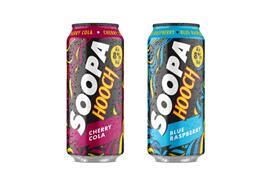
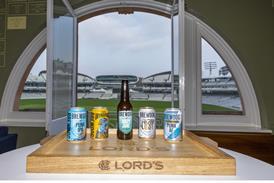










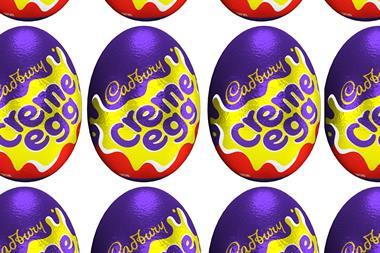


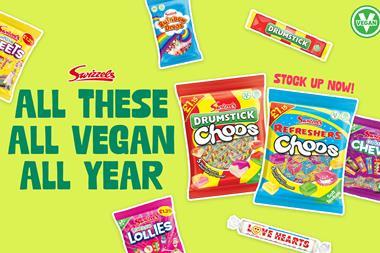
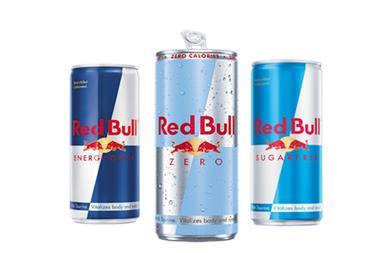
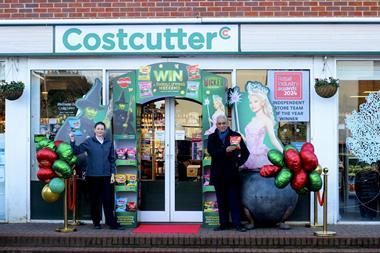
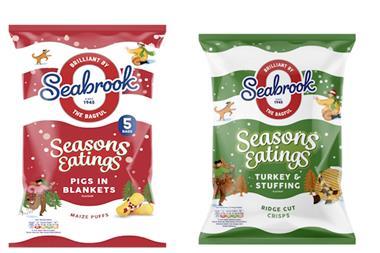
No comments yet